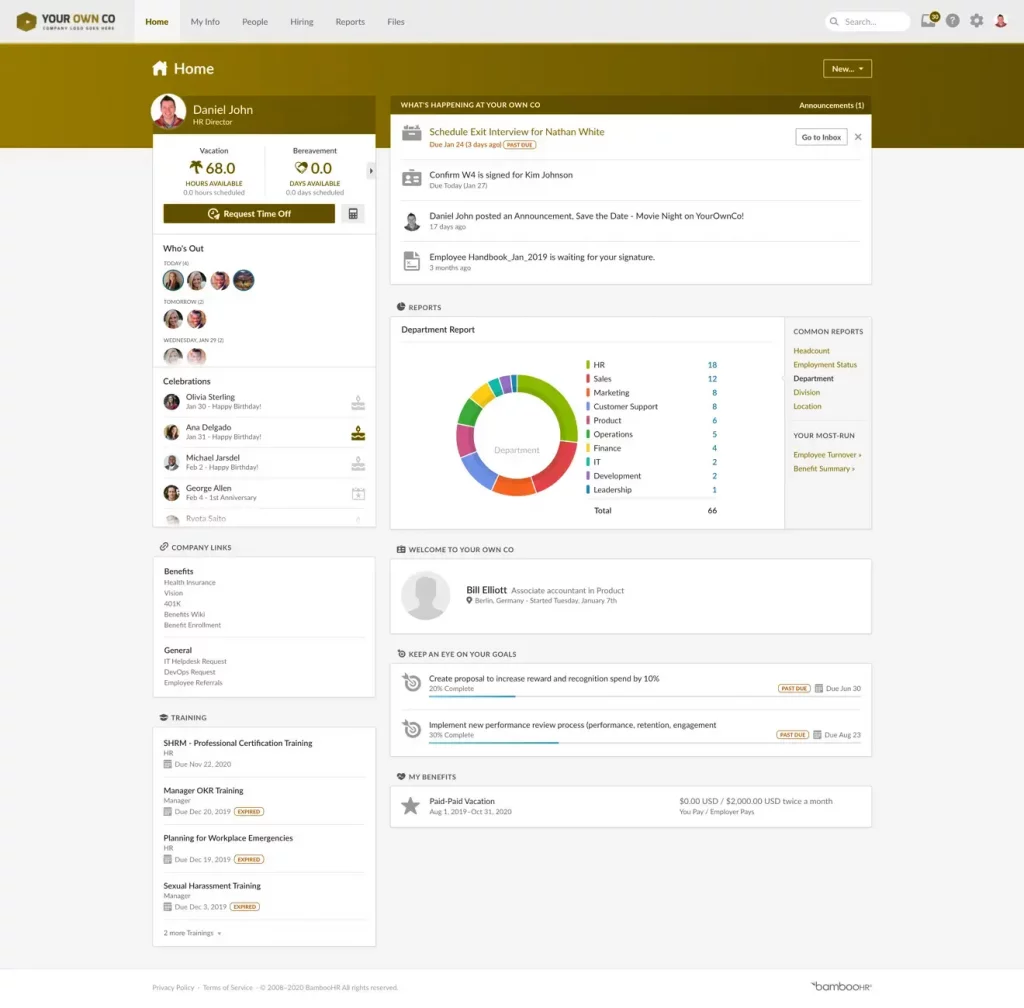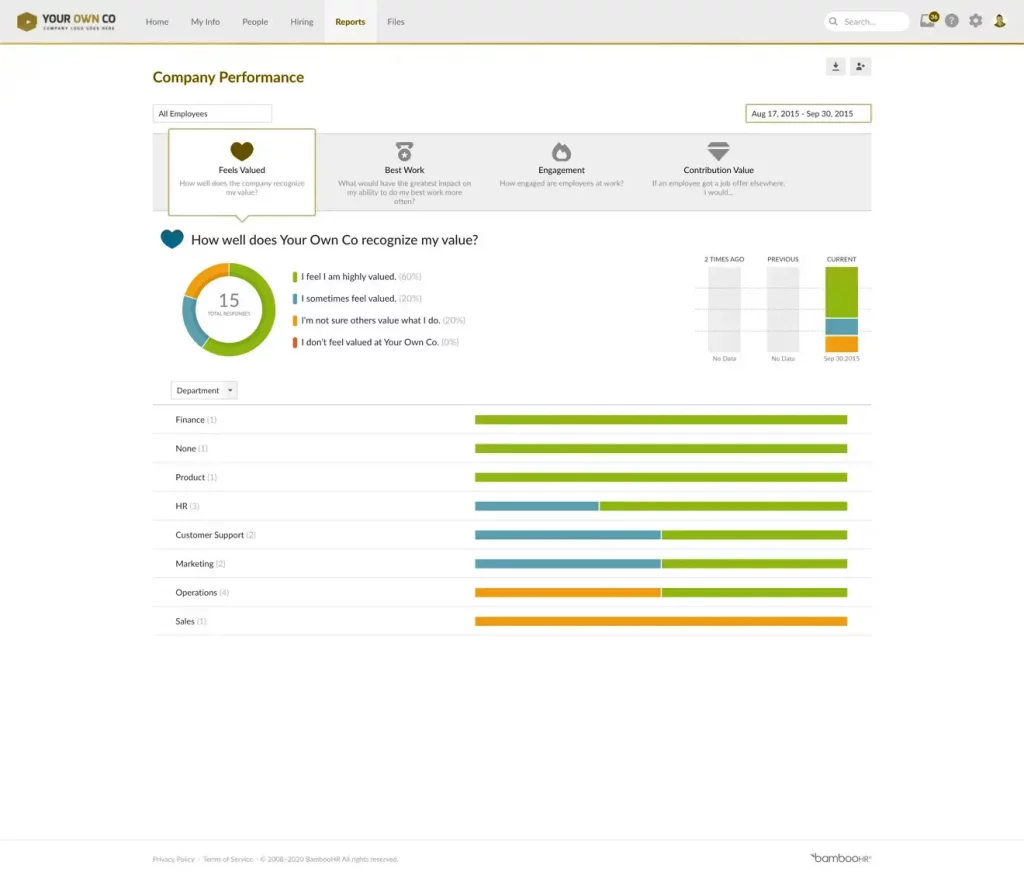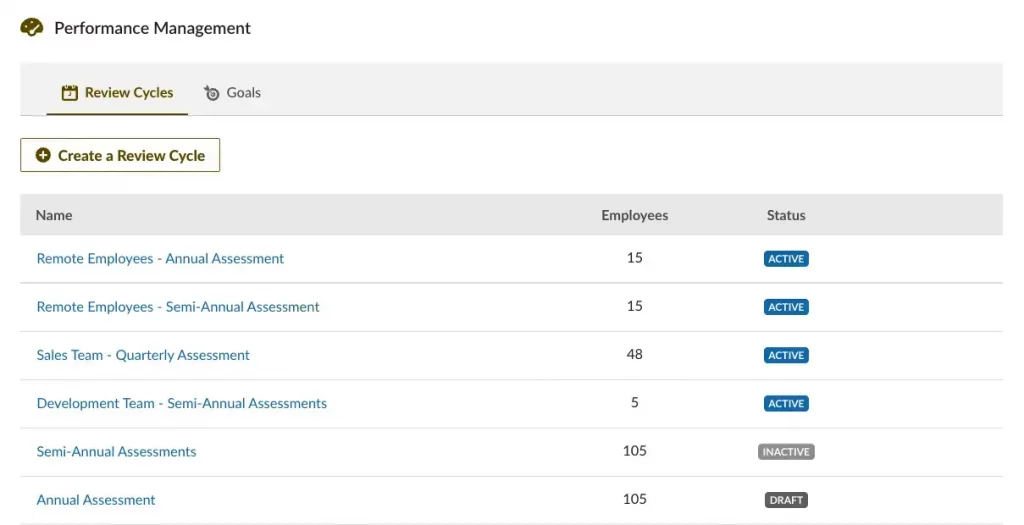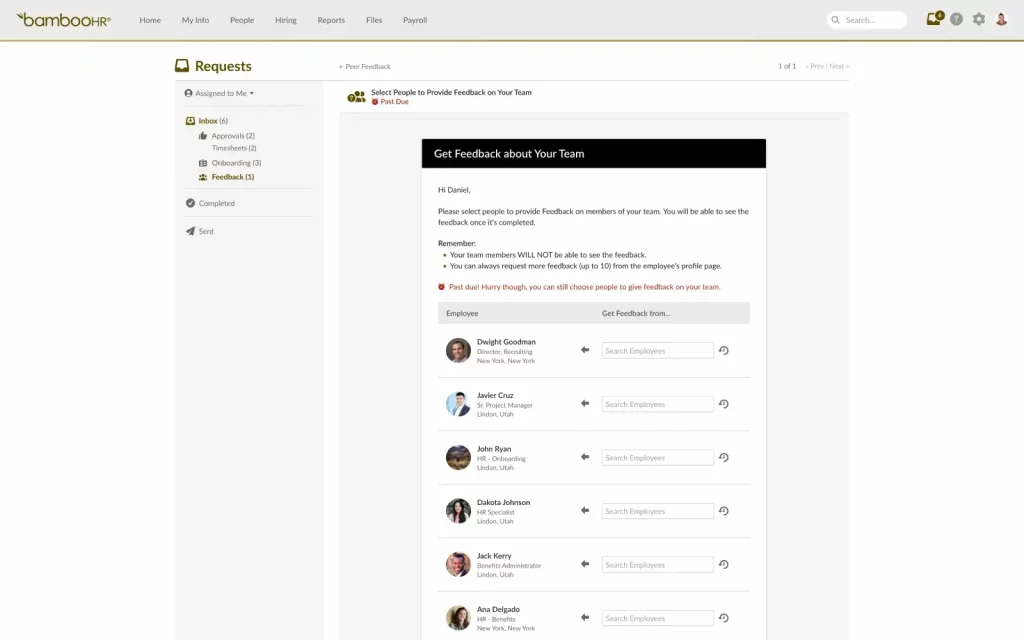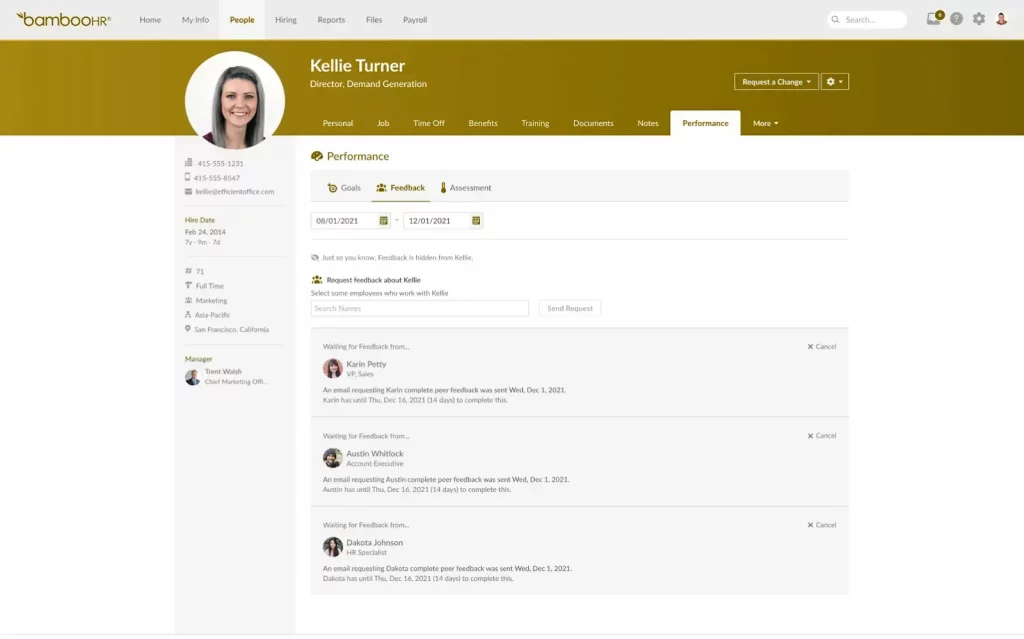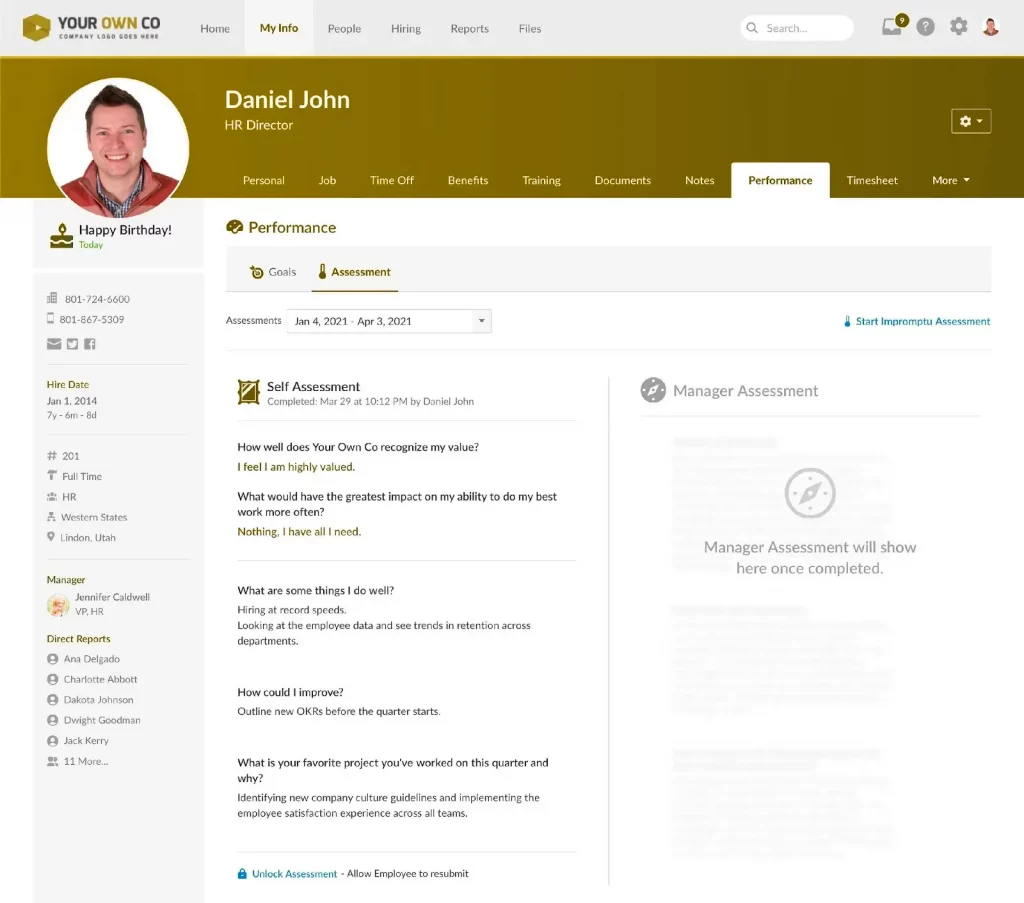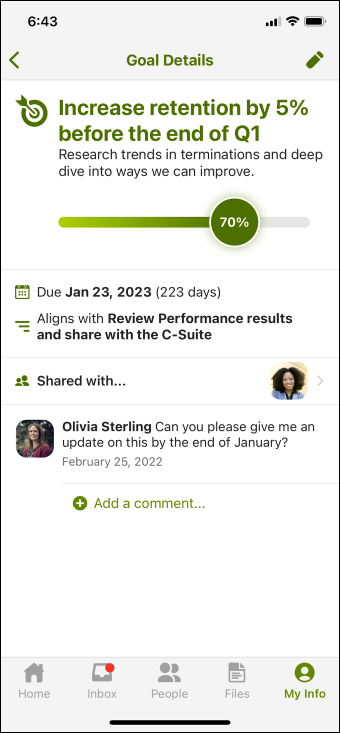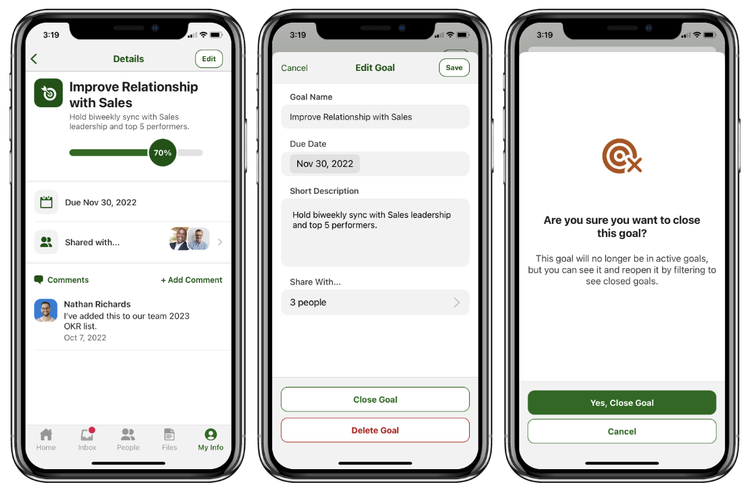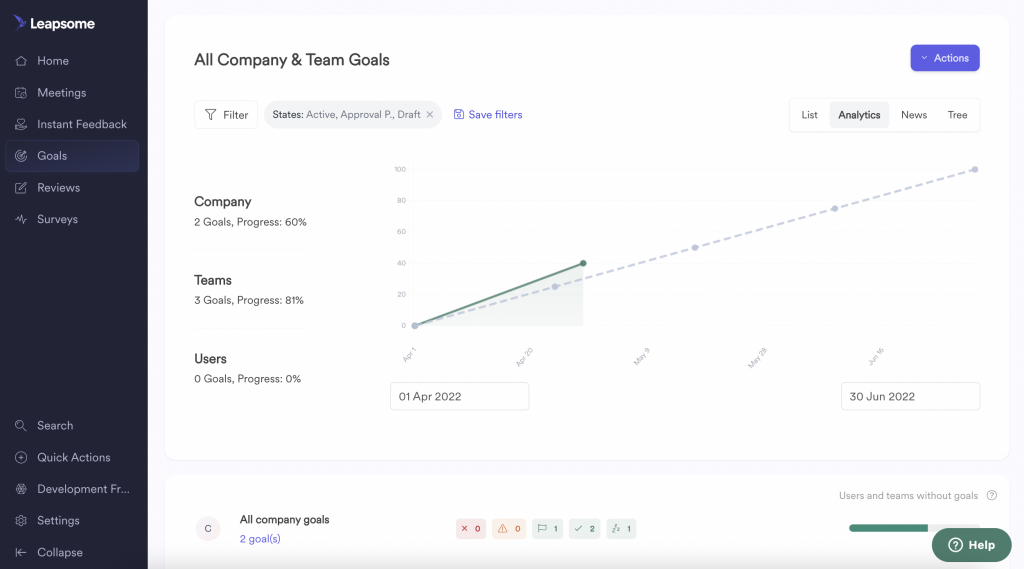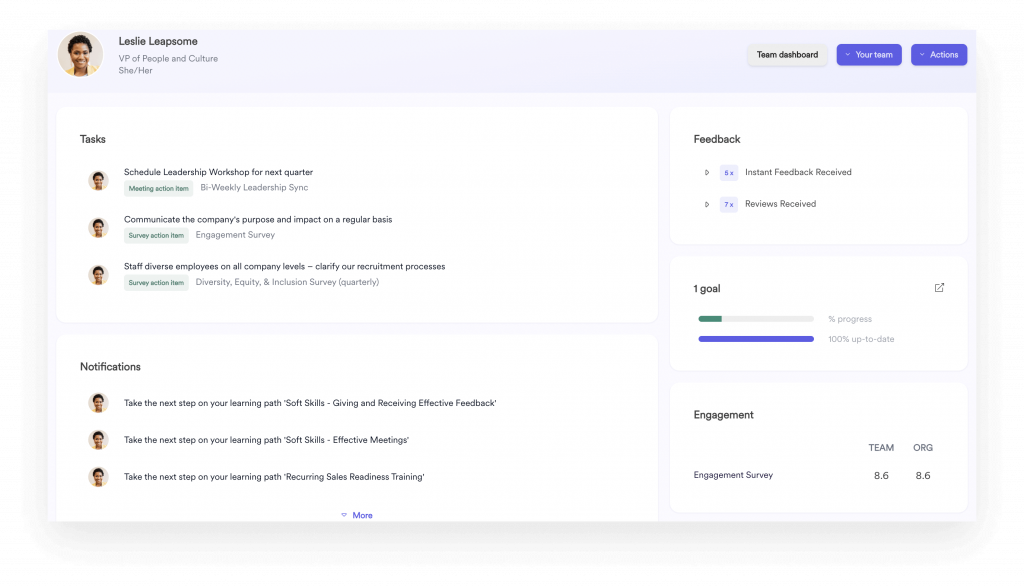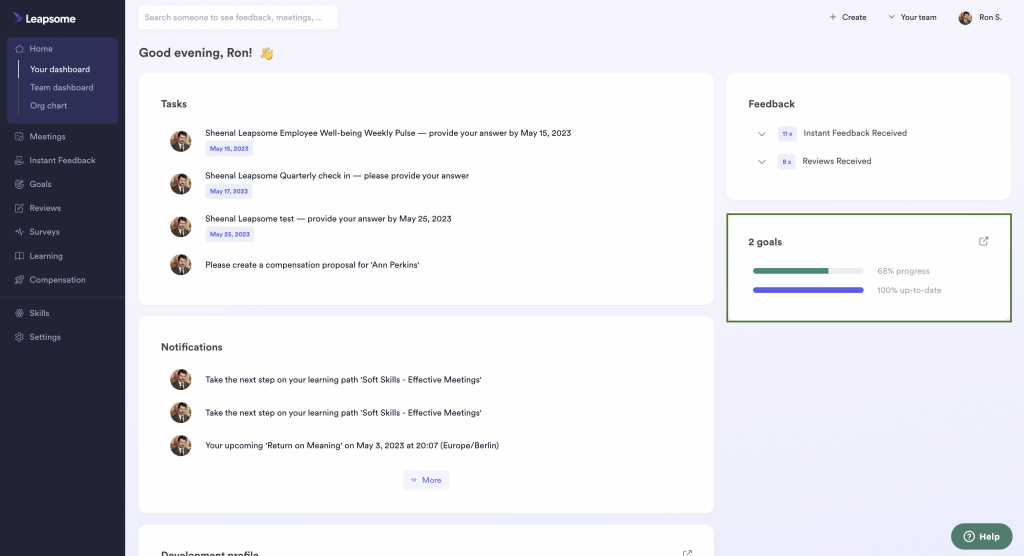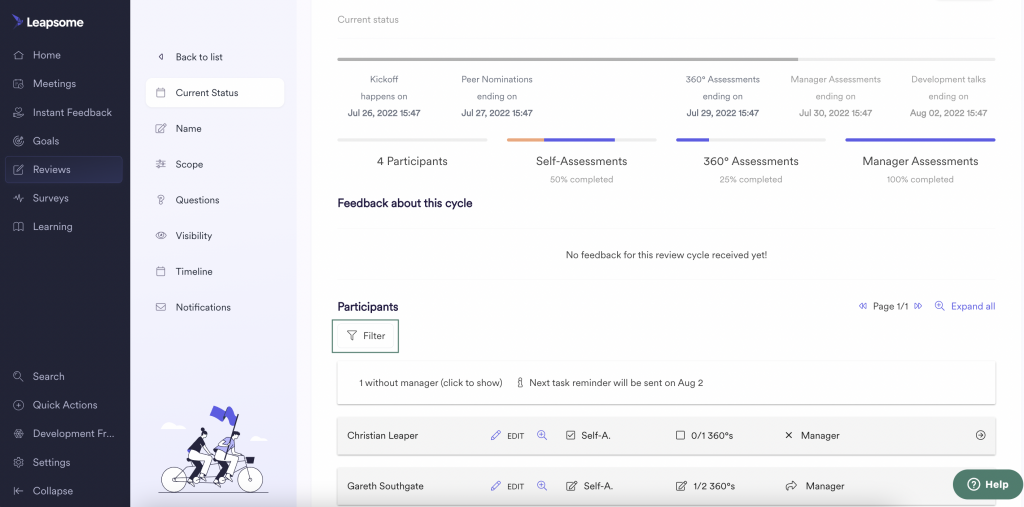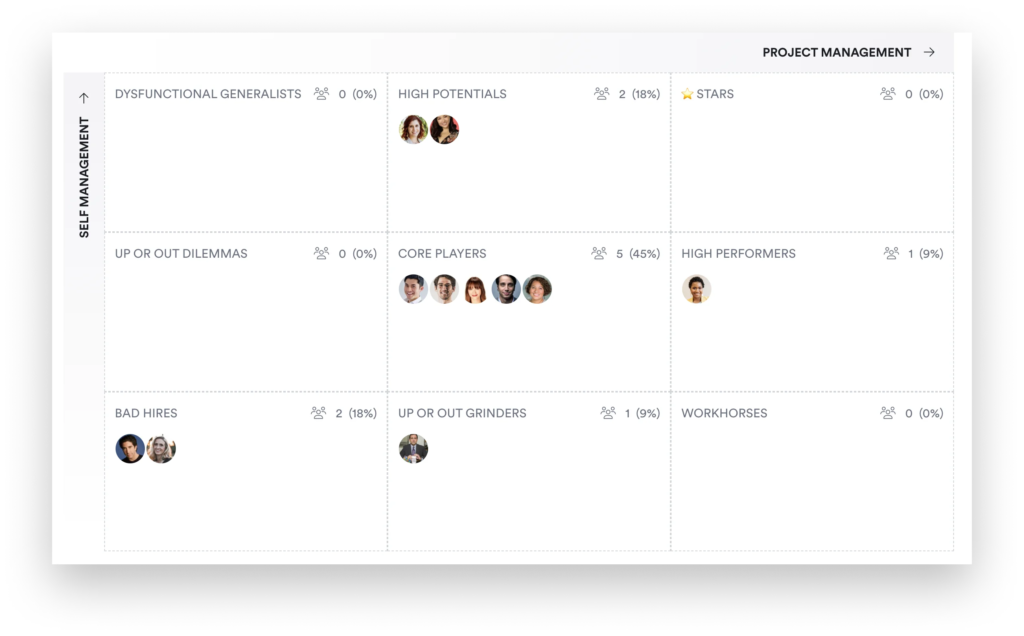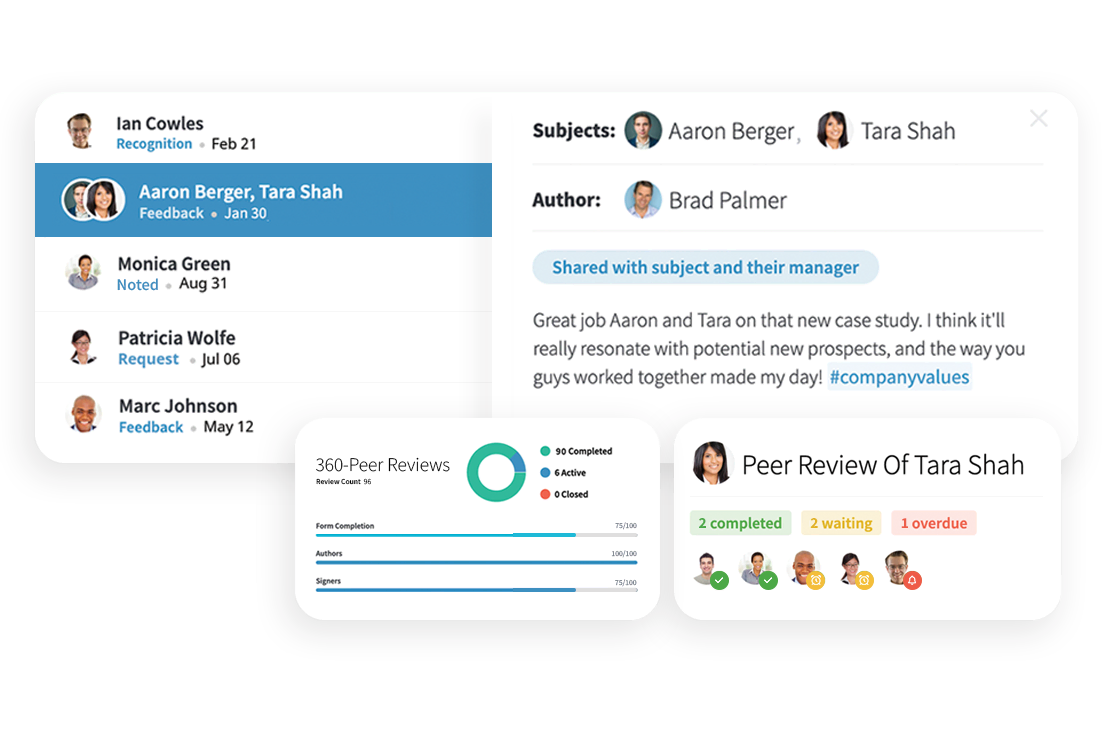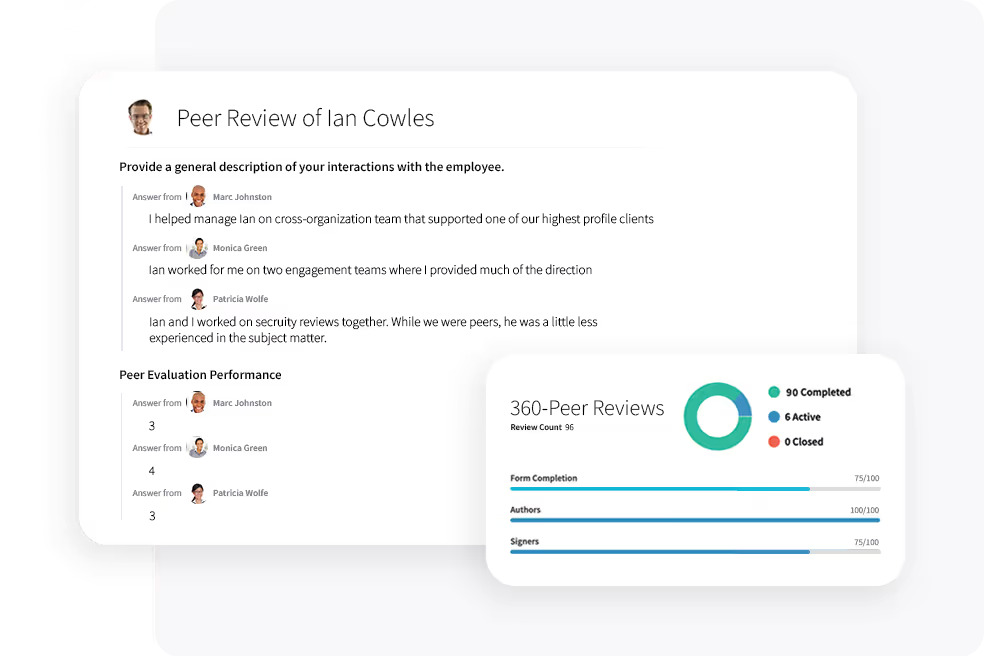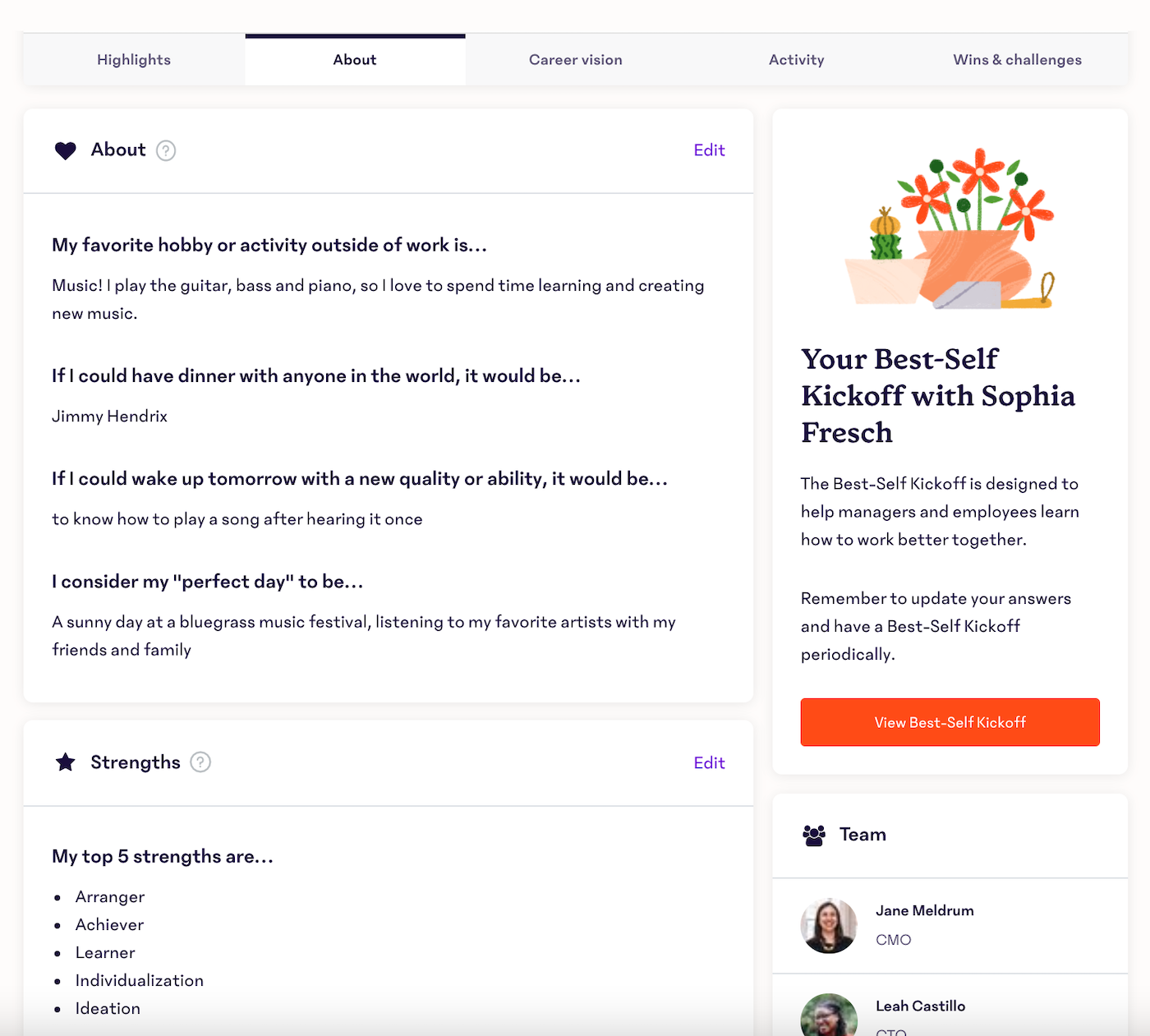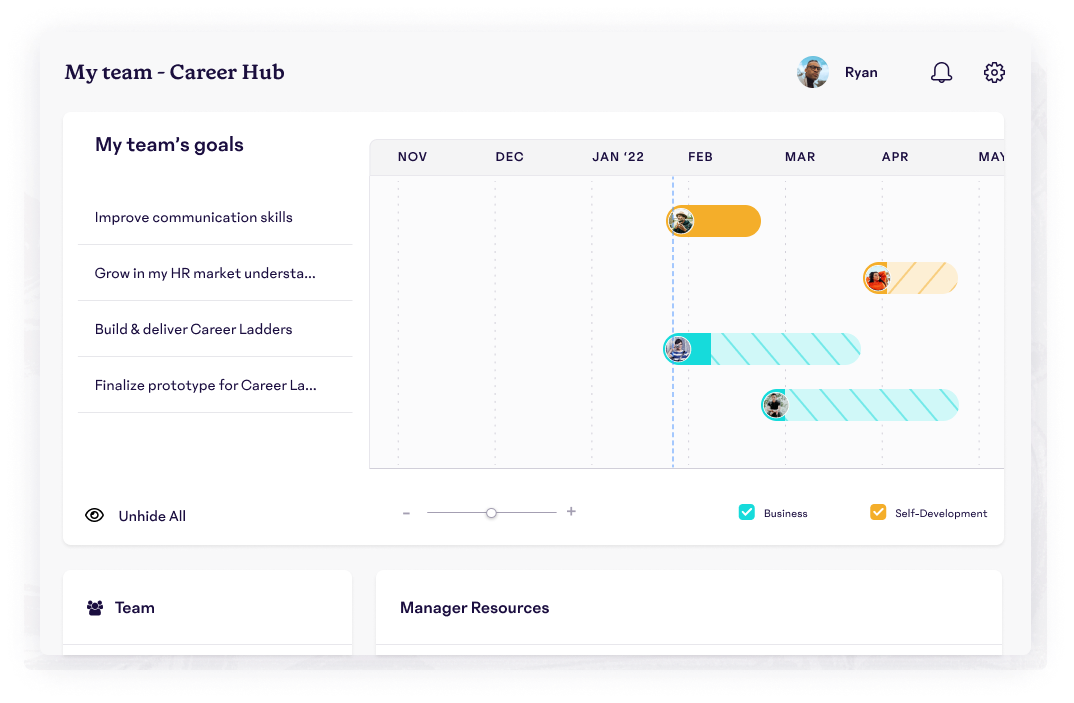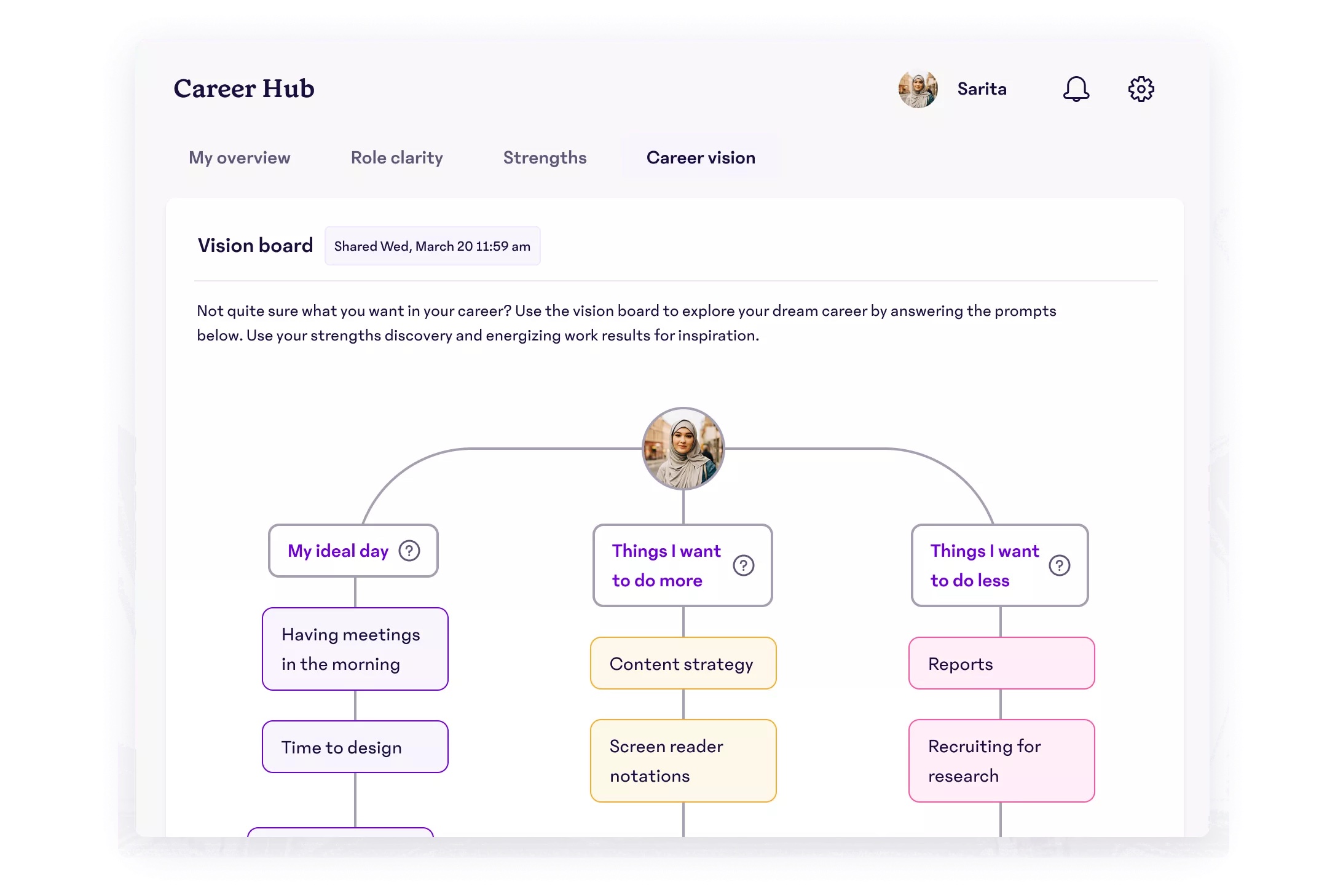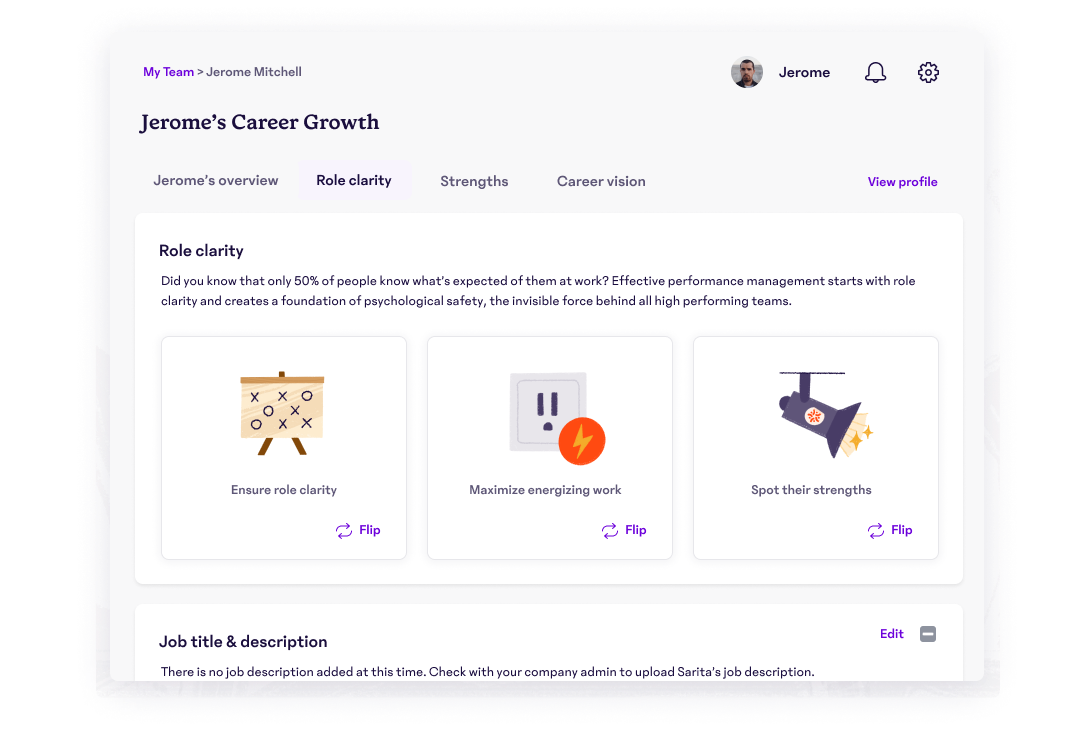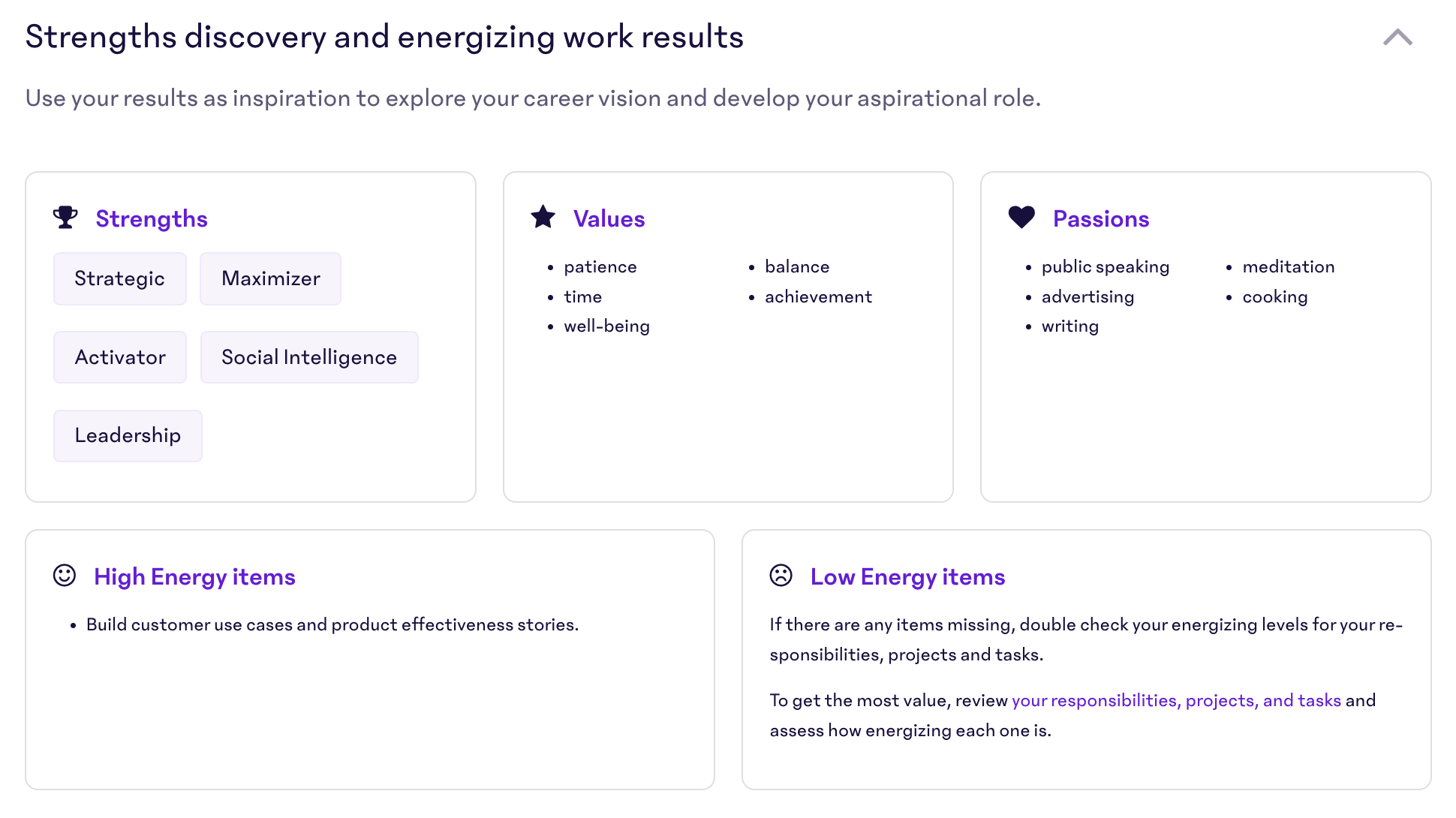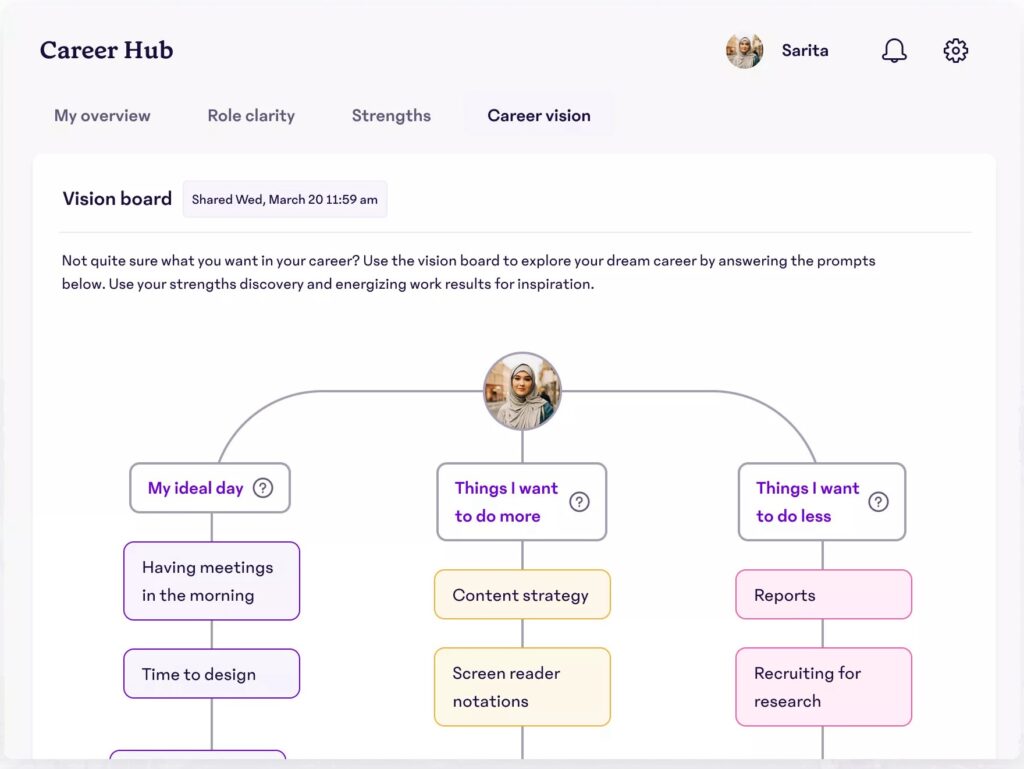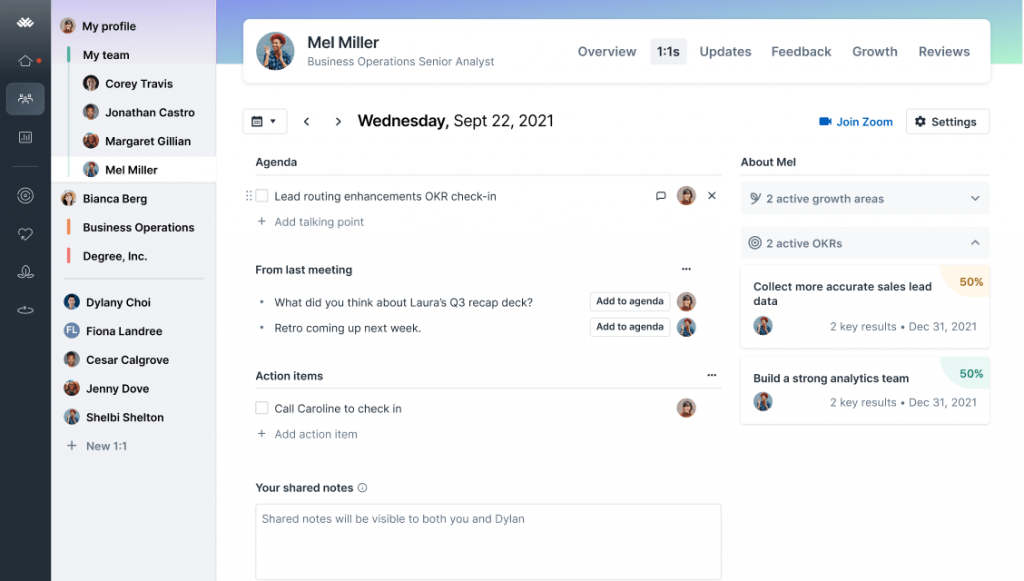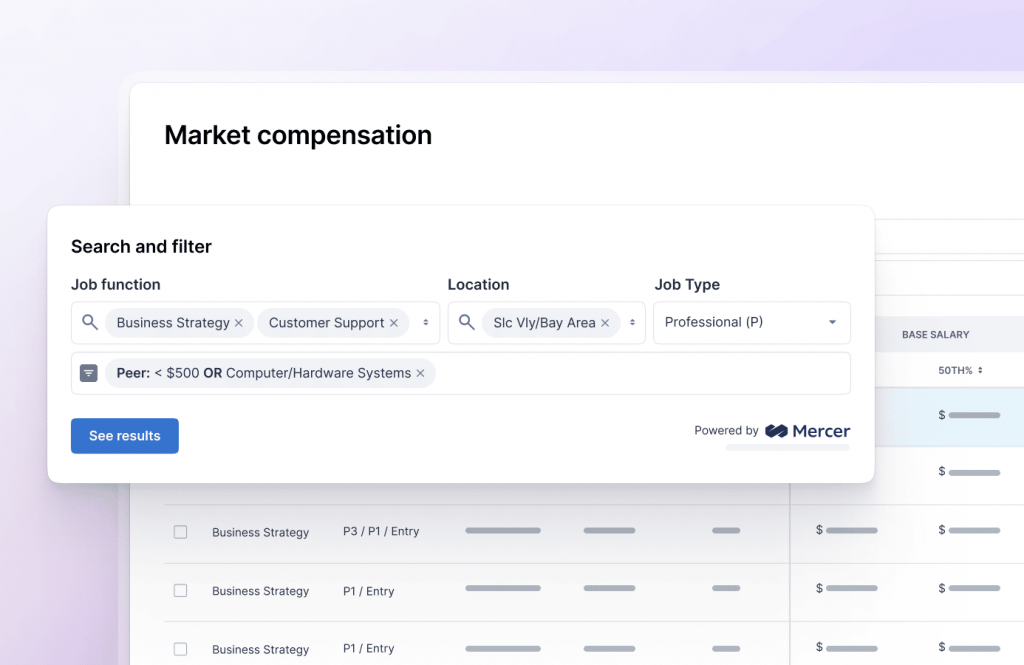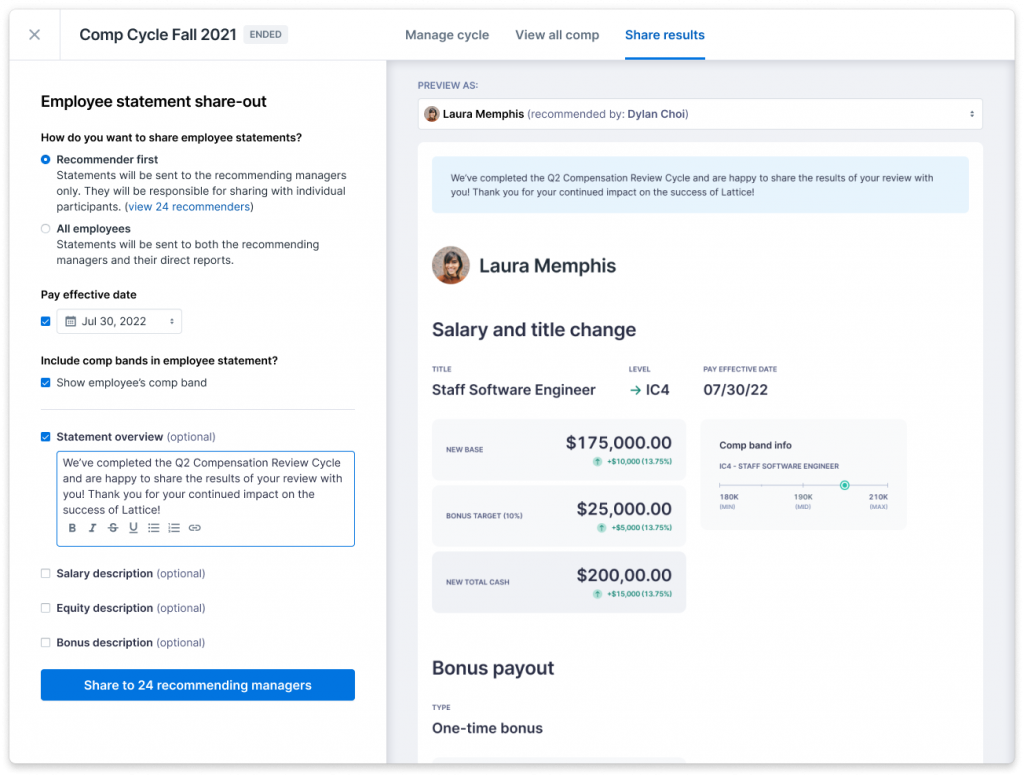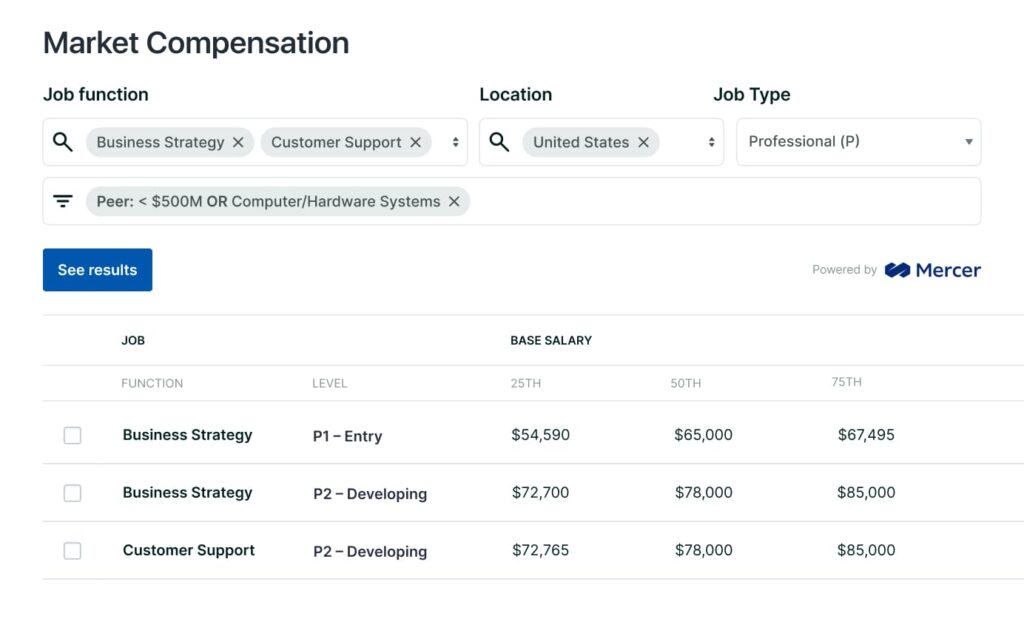What is performance management software?
Performance management software helps HR departments and managers assess the performance of employees, ensuring alignment with company goals. This type of solution can be a standalone application that integrates with other HR systems, such as payroll, or it can be a module within a broader HR management platform.
Generally, performance management software offers features for setting employee goals and expectations, tracking employee performance in real time, coaching, conducting one-on-one meetings, collecting feedback, and recognizing employees’ accomplishments with rewards. After gathering performance data, managers can make more informed decisions about compensation and development at the individual level and across the organization as a whole.
We reviewed the top performance management software solutions on the market and narrowed it down to the best of the best:
- BambooHR is the best HR software with performance management features.
- Leapsome is best for robust analytics and actionable insights.
- PerformYard is best for a personalized user experience.
- 15Five is best for promoting career development and upskilling employees.
- Lattice is best for performance-driven compensation management.
Our picks for the best performance management software
BambooHR: Best HRIS with performance management
Pros
Cons

Leapsome: Best for performance analytics
Pros
Cons

PerformYard: Best for customer experience
Pros
Cons
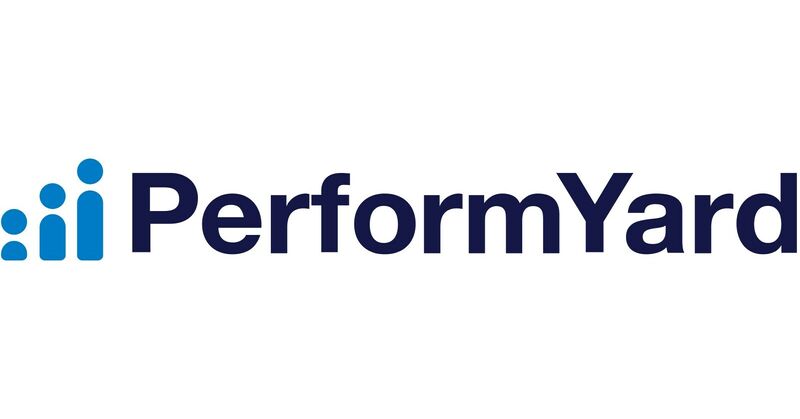
15Five: Best for career development
Pros
Cons

Lattice: Best for compensation management
Pros
Cons

Find your new performance management software
What are the benefits performance management software?
Boosts morale and motivation
One of the most important elements of performance management software is facilitating performance reviews. Regular performance reviews let managers recognize individuals for their hard work, improving employee morale. Moreover, performance management software includes feedback features that support consistent communication between managers and employees.
Along the same lines, many performance management software solutions have employee recognition and rewards capabilities, enabling organizations to further show appreciation for employees’ work. When companies consistently praise workers for exceptional performance, this encourages other staff members to enhance their own performance.
Strengthens employee retention
Regular feedback sessions give employees opportunities to interact with their managers and raise concerns. The organization can then resolve said issues as soon as possible. Workers are more likely to stay loyal to the company when their concerns are swiftly addressed, improving employee retention.
Supports employee engagement
Performance management software’s continuous feedback and one-on-one manager meeting features make employees feel heard and included in the organization. Further, these mechanisms help employees better understand what’s expected of them. When employees have clear guidance on day-to-day tasks, their efforts naturally achieve better outcomes.
Surfaces skill gaps and opportunities
With frequent performance check-ins, managers can better monitor and understand the skillsets and capacity of employees. HR teams can pinpoint individuals with skill gaps and introduce training to bridge the gap before it impacts productivity. At the same time, regular performance reviews also reveal which employees are ready for a promotion or increased responsibilities.
Encourages employee agency
Numerous performance management solutions let employees view their work progress and set business goals for themselves. Employees feel valued and more engaged because of their active involvement in the decision-making process.
What are the types of performance management software?
Check out our video overview on the four major types of performance management software below:
The business impact of performance management software
A good performance management solution enables businesses to reach goals faster and in a more structured manner, providing a real-time view of the workforce. When properly utilized, performance management software can increase employee productivity and engagement, decrease turnover, and maximize revenue per employee.
Performance management tools foster consistent and transparent communication between employees and employers. This builds trust and makes workers feel more supported, improving retention and preventing turnover. Furthermore, it lets managers and employees set clear and attainable goals that align with the company’s objectives.
With performance management software, leaders can pinpoint each employee’s strengths and weaknesses. With this data, organizations can advance employee professional development and help them overcome weaknesses.



